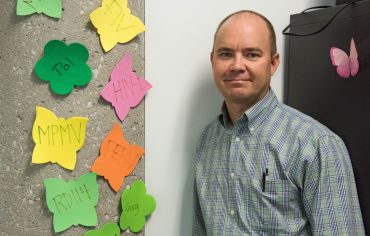Nov. 25, 2015

You shall not pass: the basic science of blocking HIV
Marc Johnson, associate professor of molecular microbiology and immunology at the Bond Life Sciences Center, studies viruses such as HIV. | photo by Jennifer Lu, Bond LSC Nineteen colorful foam flowers decorate the walls of Marc Johnson’s office, a memento from his lab members when they “redecorated” while he was out of town. Each…